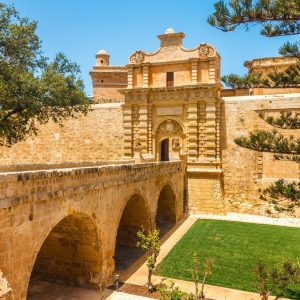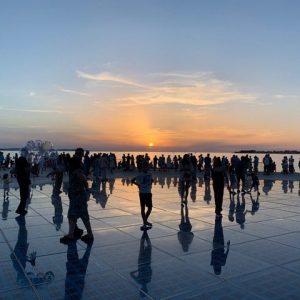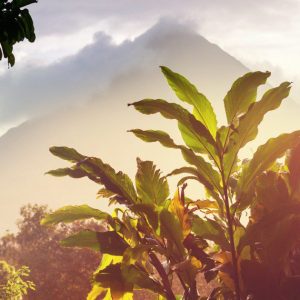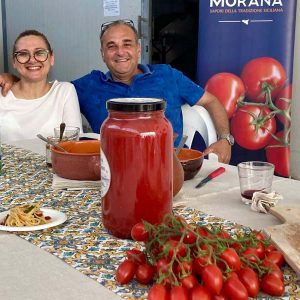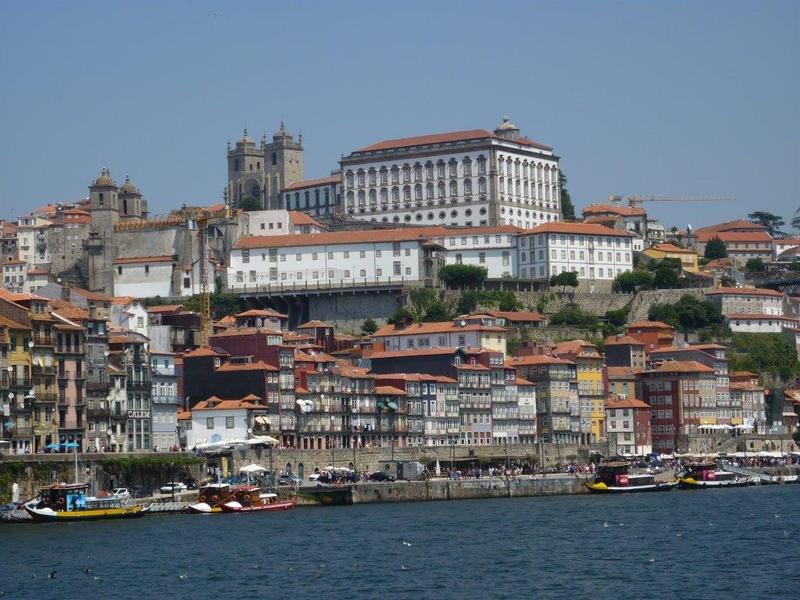 The Douro river is usually associated with Portugal, but most of its 530 miles is in Spain. It crosses into Portugal at Barca d’Alva and flows for 125 miles until it reaches the Atlantic at the famous city of Porto. It’s this final section that is truly navigable, is popular with tourists and the many companies that offer cruises along this fascinating part of the river. Ranging from wide expanses of water to narrow gorges, the river offers an ever-changing vista to river cruise passengers.
The Douro river is usually associated with Portugal, but most of its 530 miles is in Spain. It crosses into Portugal at Barca d’Alva and flows for 125 miles until it reaches the Atlantic at the famous city of Porto. It’s this final section that is truly navigable, is popular with tourists and the many companies that offer cruises along this fascinating part of the river. Ranging from wide expanses of water to narrow gorges, the river offers an ever-changing vista to river cruise passengers.
Although home to a number of excellent wines, Porto is best known for port, and it is here that the major port producers are based. Port starts life as red wine but during fermentation neutral grape spirit, 77% alcohol by volume, is added. This stops the fermentation, leaving some residual sugar that gives the port its sweet taste. Ruby port, the cheapest to make, is stored in large tanks which do not allow oxidisation, thus preserving its rich colour. Tawny ports are aged in wooden barrels and the slow oxidisation changes their colour to golden brown. Tawny ports are often described on the label as 10, 20 or 30 years old. This does not indicate the actual age, but an average of the wines that make up the blend.
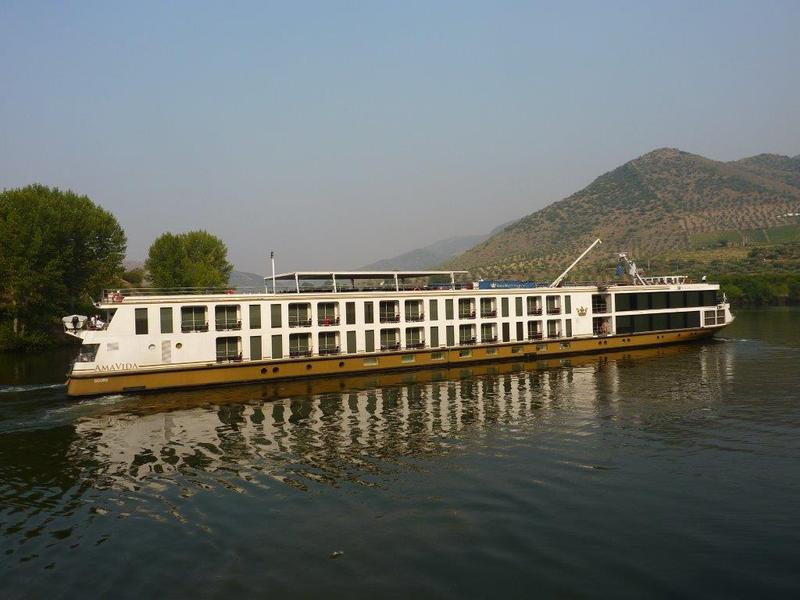 Our journey had started at Gatwick where Holiday Extras arranged valet parking for us, and we were soon on our two-hour TAP flight to Porto, the capital of northern Portugal. A short transfer brought us to Villa Nova de Gaia on the banks of the river where we boarded our luxurious cruise ship AmaVida, home for the next seven days. Our cabin was elegant with lots of storage spaces and a marble bathroom with top-class fittings and l’Occitane spa quality toiletries. Bath robes and slippers were also provided and there was a small balcony where we enjoyed cool nightcaps before retiring to our large and comfortable bed.
Our journey had started at Gatwick where Holiday Extras arranged valet parking for us, and we were soon on our two-hour TAP flight to Porto, the capital of northern Portugal. A short transfer brought us to Villa Nova de Gaia on the banks of the river where we boarded our luxurious cruise ship AmaVida, home for the next seven days. Our cabin was elegant with lots of storage spaces and a marble bathroom with top-class fittings and l’Occitane spa quality toiletries. Bath robes and slippers were also provided and there was a small balcony where we enjoyed cool nightcaps before retiring to our large and comfortable bed.
The food was also top class and wine, beer and soft drinks were included with lunch and dinner. At breakfast, sparkling wine was also available and many of our fellow guests enjoyed a Bucks Fizz with their cornflakes, although onboard it was known by its quaint American name of Mimosa.
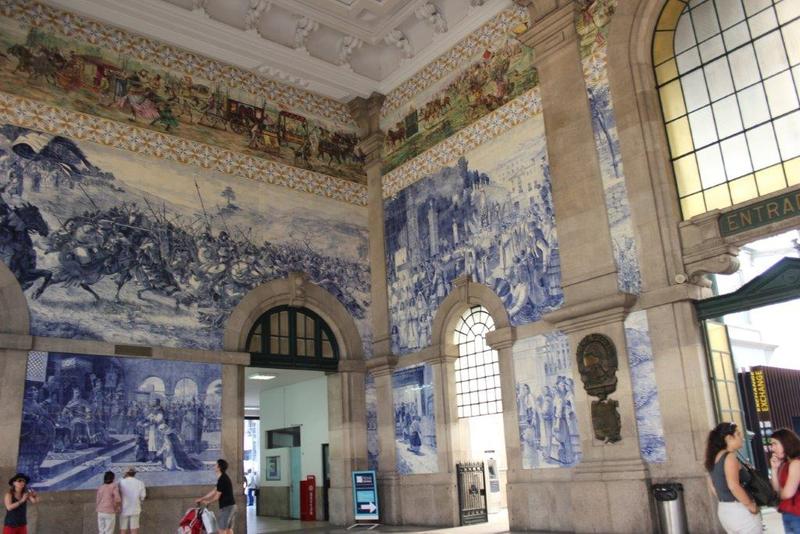 The next morning, before leaving Porto, we enjoyed a city tour and in particular the local railway station, decorated with over 24,000 Azulejos – Portuguese blue ceramic tiles. We also popped in to Graham’s, one of the many port companies in the city, and were told about the various types of port they produced, followed by a tasting of some of their vintages; and all this before lunch. That evening we visited one of the many vineyards and had dinner at Casa de Vila Verde. We enjoyed reminiscing about Vinho Verde and Mateus Rose, with which we were to come into contact again later in the week.
The next morning, before leaving Porto, we enjoyed a city tour and in particular the local railway station, decorated with over 24,000 Azulejos – Portuguese blue ceramic tiles. We also popped in to Graham’s, one of the many port companies in the city, and were told about the various types of port they produced, followed by a tasting of some of their vintages; and all this before lunch. That evening we visited one of the many vineyards and had dinner at Casa de Vila Verde. We enjoyed reminiscing about Vinho Verde and Mateus Rose, with which we were to come into contact again later in the week.
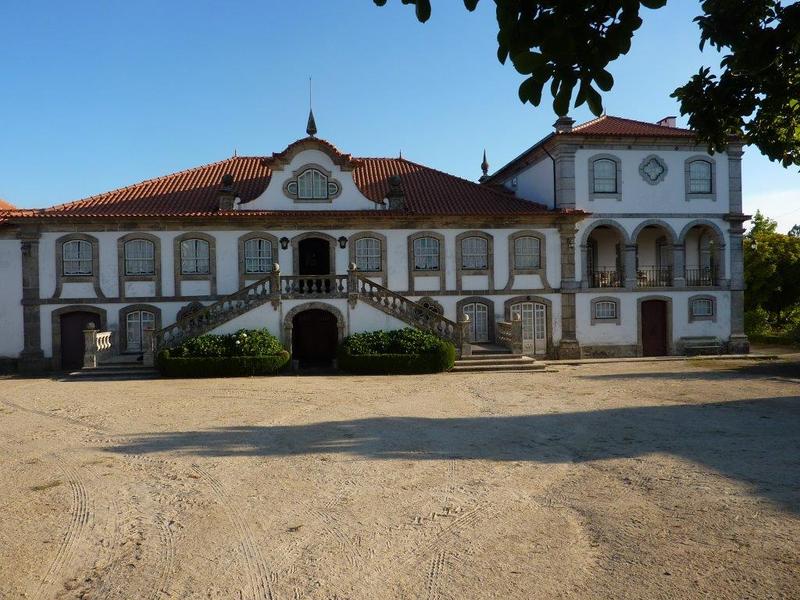 By the way, the word Verde, meaning green, does not describe the colour of the wine but that it is young wine.
By the way, the word Verde, meaning green, does not describe the colour of the wine but that it is young wine.
Narrow and rocky in parts, most of the hilly banks of the river are dedicated to the growing of grapes for the production of wine and port. Famous names along the river included Dow’s, Graham’s, Sandeman, Cockburn, Warre’s, Croft and the numerous Quintas (farms) that were home to the vineyards that supplied the wine and port industries.
The following day we visited the Douro museum in Regua before heading out to Lamego and the 18th century Sanctuary of Our Lady of Remedies. Pilgrims climbed more than 600 steps to reach the sanctuary but fortunately our coach did the journey for us. 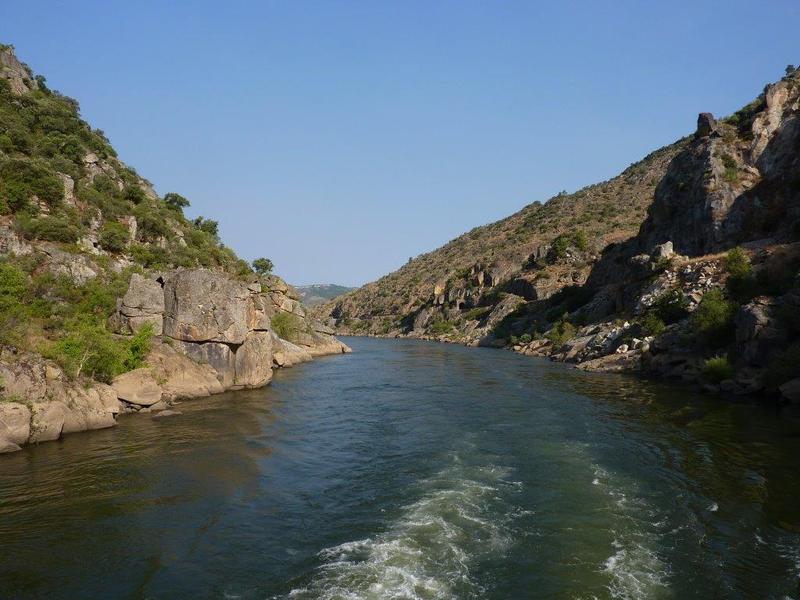 On the way down we stopped for a tasting of sparkling wine. Then we had a spectacular drive to hilltop Quinta do Seixa where owners, Sandeman, treated us to yet another selection of ports.
On the way down we stopped for a tasting of sparkling wine. Then we had a spectacular drive to hilltop Quinta do Seixa where owners, Sandeman, treated us to yet another selection of ports.
The next day we reached the turning point of our trip and AmaVida docked in Vega de Terron, just a few yards over the border into Spain. The Spanish Renaissance city of Salamanca is around fifty miles from here and its University, founded in 1218 attracts many international students. Declared a UNESCO World Heritage Site in 1996, it shared the title of 2002 European Capital of Culture with Bruges.
The city is famous for having two cathedrals joined to each other, one built in the 12th century and the other in the 16th century. The latter was originally built to replace the older building but by the time it was finished, both were needed to cope with the rise in the population.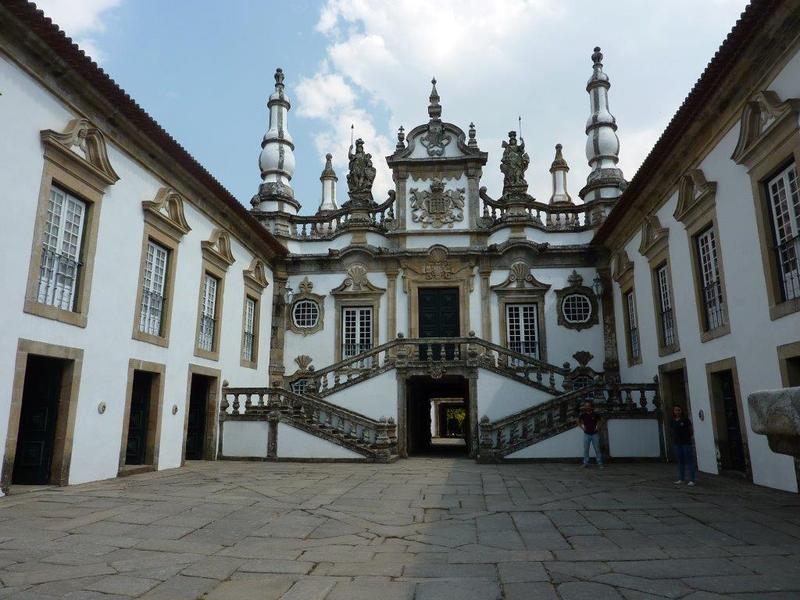 It’s also famous for its town square or Plaza Mayor, considered by many to be the most elegant in Spain.
It’s also famous for its town square or Plaza Mayor, considered by many to be the most elegant in Spain.
The following day we headed back downstream and stopped at Pinhao where we drove to Croft’s Quinta da Roeda for lunch before visiting the Palace of Mateus whose famous facade adorned those odd-shaped bottles of Mateus Rose so many of us remember, and maybe still use as table lamps.
The morning of our final full day on board was spent admiring the increasingly busy banks of the river as AmaVida headed back into Porto and our mooring at Villa Nova de Gaia. 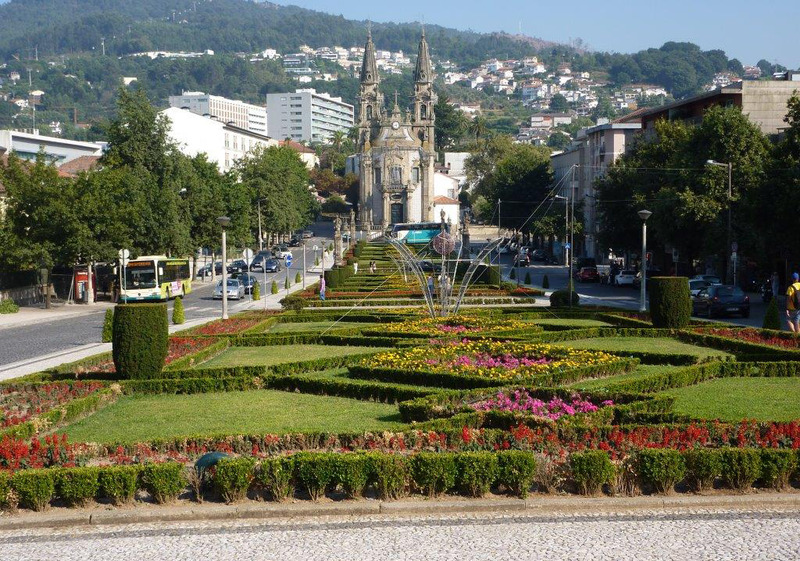 Saving the best to last, we left the ship after lunch to visit Guimaraes. The city dates back to the 10th century and was home to a religious settlement of nuns and friars in what was then Spain. In 1128 after the battle of Sao Mamede, the victorious Afonso Henriques declared Portugal’s independence from Spain and the new country was born with Afonso the First as its King.
Saving the best to last, we left the ship after lunch to visit Guimaraes. The city dates back to the 10th century and was home to a religious settlement of nuns and friars in what was then Spain. In 1128 after the battle of Sao Mamede, the victorious Afonso Henriques declared Portugal’s independence from Spain and the new country was born with Afonso the First as its King.
We also visited the lovely Casa de Sezim where we were greeted by the current owner, the house having been in his family since 1376.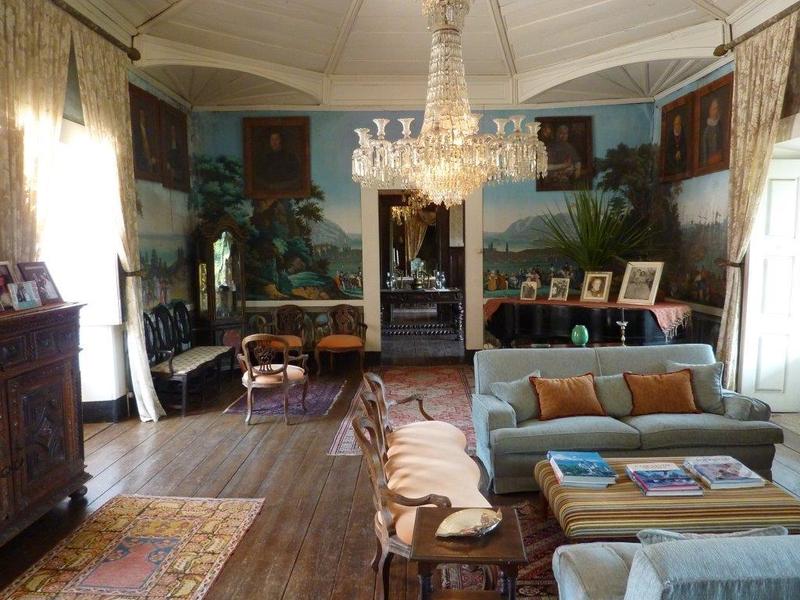 It has stunning and extremely rare 19th century hand-printed wallpaper whose colours are as bright today as they ever were and the vineyards produce top quality Vinho Verde which we were happy to sample. Casa de Sezim also has eight bedrooms for visitors who can revel in this peaceful and charming house with its lovely gardens.
It has stunning and extremely rare 19th century hand-printed wallpaper whose colours are as bright today as they ever were and the vineyards produce top quality Vinho Verde which we were happy to sample. Casa de Sezim also has eight bedrooms for visitors who can revel in this peaceful and charming house with its lovely gardens.
Next morning we packed and after breakfast and yet another glass of Mimosa, we headed back to Porto’s quiet airport for our short flight back to Gatwick, with great memories of delicious food, history and culture, and generous quantities of wine and port.

